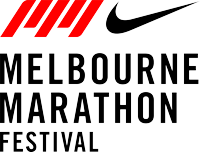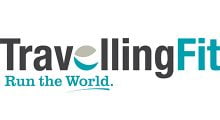The Balancing Act
By Tim Crosbie – Athletics Victoria
The Yin and Yang of running are what appears so simple. But, unfortunately, the physical act of putting one foot in front of the other can also gain levels of complexity that may leave new and experienced runners alike in a state of utter confusion.
When looking at your training week for the upcoming Nike Marathon or Nike Half Marathon, do you include long runs, speed sessions, fartlek, hills, tempo runs, progressives, easy runs, and some Pilates, gym workouts, and yoga? If the answer is yes to all the above, you are quite a unique human being!
So, let’s try to demystify all of this to achieve the balance YOU need at this stage of training.

Explaining the Training Elements
By nature of the distance and time duration involved, both the Marathon and Half Marathon are classed as ENDURANCE events. So guess what? Endurance is the most critical element of your training as you build towards your respective goal.
What is endurance training? Put simply; it is the progressive loading imposed on your body over a given period. The ‘long run’ is critical as it simultaneously works your musculoskeletal, cardiovascular and energy systems. Post long run is when your body’s excellent adaptive processes kick in, and if allowed a recovery period after this run, the body will return to a state where the next long run can go a little further. That’s what progressive loading is all about, and never underestimate how vital smart recovery is to the process.

So for all of you, endurance training is non-negotiable. How far and how fast will depend on your circumstances, such as training history, age, genetics, injury history, goal finish time and even the terrain you may run on.
As for some ballpark numbers, and I’ll go with distance rather than time, our first-timers should be looking around 16km for the Half Marathon and 32km for the Marathon as the maximal long runs. Building up to these gradually, then using the last 3 to 4 weeks of training to come back down.
For experienced runners, you’re likely to go over the 21km in your Half Marathon training, while the Marathon runners often cap around the 36km mark. So why don’t we take the Marathon runners beyond 42km?? In some cases, we might if their running history is extensive or they may come from an Ultramarathon background, but in general Marathon specific training caps between 35k and 40km for experienced runners.
You now get the rationale behind endurance; let’s talk now about two training elements I’ll bundle into one – QUALITY & STRENGTH.
Let’s face it, if all you do is long, slow, boring runs, you’ll just turn yourself into a long slow, boring runner. On the flip side, if you inject too much speed into your long runs, it is highly likely you’ll end up a) injured or b) you are worn out by race day.
This is why we introduce some level of quality into your running week, then combine it with some strength work, be it as a type of run or a separate session in the gym, pilates studio or even out in the garage with some weights.
Unsure whether you’ve got the engine for some QUALITY running or worried it might heighten the risk of injury? Well, yes, these are legitimate concerns, so the best advice is to approach any faster or more intense running gradually and with a bit of a plan.
We talked earlier about how the long runs worked various systems in the body; quality does precisely the same but with a higher emphasis on the cardiovascular and musculoskeletal systems. So yes, it can feel uncomfortable, yes, it is hard work, yes, it is stressful, but yes, it delivers bang for your running buck if done correctly.
What sessions are we talking about? Let’s kick off with Fartlek, the most versatile training tool for runners. Essentially on/off running, Fartlek takes various forms, with Australians opting for time-based Fartlek in most cases. You’ve probably heard of “Mona fartlek” by Nike Melbourne Marathon Festival Ambassador Steve Moneghetti. This 20min session starts with 90sec “on” segments, then moves down through 60sec, 30sec and finally 15sec segments with the “off” being the same time duration, i.e., 90sec on/90sec off, 60sec on/60sec off etc.
Why is this a versatile form of training?
It can be done anywhere, anytime, and on any terrain, with the pace for the on and off segments being up to you.
If you don’t want to run the “offs”, why not walk some or all of them? You might want to set up a fartlek course in a park with ons and offs of varied distance and terrain, or if in a regional area, why not do light pole fartlek… 2 light poles on, one light pole off as an example. This type of training will make you work but in a controlled manner that can respond to how you feel or where you’re running.
Are you feeling the need for speed? Why not think about hitting a track or trail nearby and do distance or time-based repetitions to challenge the cardiovascular system? For the endurance events, repetition distances generally range from 400m to 2km, with the number performed and recovery between the variables.
The aim of repetition-based training is to get you running quicker than the goal race pace. How far, how fast, and how much recovery are once again individual dependent on your running background and goal event. Suppose you’re looking to improve your speed and running economy. In that case, shorter repetition distances and longer recoveries will do the trick, while if you’re after speed/endurance, lengthen the distance and shorten the recovery.
Some sample sessions to demonstrate the above would be 2 x 5 x 400m repetitions with a 90sec static recovery between each and 3 minutes static to separate the 2 sets of 5, with a session like 6 x 1km with a 2min static recovery working your speed/endurance beautifully. Getting your pace right can be trial and error, but the key outcome is to have relative consistency across all repetitions, with this pace judgement developing over time.

We’ll move on to tempo running now, perhaps the most confusing term confronted by runners. So let’s simplify this – how often do you practice race pace?
So given we’re doing fartlek for the on/off training and speed work for top-end running, why not consider a few tempo runs to lock into what you think your racing pace should be. Tempo distances may range from 6km to 14km for the Half Marathon or 8km to 18km for the Marathon, but if a series of these are done in the lead-up, your understanding of what race pace feels like becomes second nature.
One of the critical drivers for running coaches is to develop their runners to have a functionally strong body. You can run as many kilometres as you want, but without general muscular STRENGTH, your ability to hold good running posture will be compromised.
As mentioned, we can cover this from two perspectives – running sessions and non-running sessions. For running sessions, our primary focus is hill running. Love them or hate them, hills are part of our natural environment and, if embraced, can become a strength rather than a weakness.
So consider how you currently incorporate hills into your training as they can be a part of some of your long runs, a specific short/sharp session or even within a fartlek workout.

Mastering the hill running technique is the next step, and remember, what goes up must come down, so downhill running technique is also a skill to be learned. Here are the basics of what to consider when running up or down.
Uphill – mid to forefoot plant, slightly lean forward from the ankles, shorter steps, use the arms to drive, keep your focus just a few metres ahead.
Downhill – maintain mid to forefoot plant, keep the slight lean forward, lengthen stride a little but do not heel strike, use the arms for balance. Your feet should land under the centre of gravity to absorb the load.
Aside from hill running, water running and sand running will both contribute to strength. Sand running can be pretty specific for trail racing and isn’t accessible to everyone, but incorporate this training method if you’re interested in some research on appropriate sessions and gear.
Water running is commonly seen as the punishment for injured runners, but it is a legitimate form of run training on its own. Why?
Just try running suspended in water and not touching the bottom of the pool, and you’ll soon realise you are activating key muscles groups while facing the resistance of the water. Of course, a floatation vest or pool noodle will be required to keep you upright, and for the Strava users, you’ll be frustrated by just moving a few metres in a session, but let’s not go there!
When do we use water running? It can be a replacement for road miles if your dear old body is starting to show the wear and tear of hitting the pavement too much.
Fartlek or time-based quality sessions can also be undertaken in the pool, which can be handy if climatic conditions and location prohibit outdoor sessions. So if you are heading to Bali during your preparation, keep the poolside Pina Colada on ice for half an hour as you reel out a quick session to make it taste even better.
The running strength components will help develop bodily strength, but for true functional strength, you must incorporate some non-running elements. Using excuses such as “not enough time”, “I’m not a gym junkie”, or “Pilates is too expensive”, just don’t cut it anymore. If you want a body that can sustain endurance running and help avoid injury, then make this a priority.
If not already part of your routine, the best first step here is to visit a Sports Physician or Physiotherapist, who ideally has a background in dealing with running clientele. They can then identify the specific areas of your body that may require additional attention or continued work to have you holding good running form throughout your event. And the aim isn’t to turn you into Arnie Schwarzenegger, more to make sure you’re not dragging your derriere into the MCG on race day.

OK – you’ve now got your head around the importance of ENDURANCE, QUALITY & STRENGTH, time to focus on the poor relation of the training elements… ABSORPTION running.
You see an easy or recovery run on the program and decide to either a) run it quite quickly to get more kudos of Strava or b) skip it altogether as it’s JUST an easy run and won’t help you run further or faster on race day. WRONG, WRONG, WRONG!
Absorption running is exactly as the term implies; a run that provides a shock absorber between runs that are either long (endurance) or hard (quality & strength). The awesomely wonderful human body adaptive responses we mentioned earlier will only be truly effective if recovery, an essential ingredient in the recipe, has a chance to work.
An absorption run still has the musculoskeletal, cardiovascular and energy systems ticking away, but at a level that is actively helping you recover from a previous session while preparing you for the next. It sounds simple and makes total sense, but getting this wrong is what turns most coaches grey or bald very quickly and, in the end, may be why you hit race day overcooked and stale.
What does an absorption run look like? How about a moderate distance you can tick over with ease at a pace you can tell someone your life story or belt out your favourite Taylor Swift song, whatever takes your fancy. But seriously, this is the run or runs each week where you take the pressure off and realise why you discovered a love for running in the first place.

Pulling it all together
It is now time to logically build a training week based on our understanding of training elements.
Long runs – a weekly ritual usually followed by good coffee and a hearty breakfast. Remember, ENDURANCE is critical to all runners undertaking distance running. Keep the pace relative to your goal race pace, with the old 40sec to 1min slower than goal pace being a regular rule of thumb. Your program or coach may occasionally include a ‘pick up’ into a long run where you go to race pace for a given segment (maybe 5k or 10k towards the end), but don’t turn your very long runs into race pace preparations as we’ve got other tools to do that.
Long run progressions are also important together with the positioning of the maximal long run. The 10% rule can come into play here, and although it has its critics, it is a rule that shouldn’t get you into trouble… 20km long run this week, 22km long run next week.
As for the maximal long, one excellent bit of advice I was given early in my coaching career was “you are today what you were training a month ago”, so around 3 to 4 weeks for the Half Marathon or 4 to 5 weeks from the Marathon sit nicely. Run your maximal too close to race day, and you risk not having recovered and absorbed it in time.
Quality & strength – depending on how often you run, these sessions are generally undertaken once or twice per week.
And don’t be afraid to mix and match here. Maybe a nice period of hill training early in the preparation, followed by some fartlek or longer repetitions mid-phase, then a little bit of faster work when you start to drop the mileage.
Make sure any quality work you do is relevant to your event and period of training. Going out and doing 100m sprints a day or two after your longest runs isn’t the wisest plan. When advising my runners, I would prefer them to concentrate more on their tempo efforts in the final 14 weeks of the program, as this is still a good form of quality running and very specific to the goal race ahead.
Absorption runs – and so to the final piece of the training jigsaw puzzle. Slot them in to buffer the long/hard sessions, keep them at a pace and distance that won’t challenge you and take your time to enjoy the act of running

So what does all this look like?
Let’s wrap this up by continuing the keeping it simple theme. Assuming that you’re running at least twice a week, here’s how the running elements of a given week might look using our E, Q&S and A base letters:
2 days running – E & A and alternating E & Q/S every third week
3 days running – E, A & Q/S
4 days running – E, A, Q/S & A
5 days running – E, A, Q/S, A & Q/S but potentially alternating E, A, Q/S, A & A on ‘down’ weeks
6 days running – E, A, Q/S, A, Q/S & A with one of the A’s being longer
7 days running – E, A, Q/S, A, Q/S, A & E or an additional Q/S. The second E should be 50 to 60% of your longer run
You may be doing additional strength work in a gym or studio, riding your bike as a commuter or road cyclist, going to yoga or even incorporating bushwalking or rucking. If so, just make sure these activities slot into your running program appropriately.
The final piece of advice is to enjoy your running. We know the heavy phase of training for these events can weigh heavily on your family, work and social lives, so keep it all in perspective and see your goal event as just another step along the way to a lifetime of activity and fitness.

Written by Tim Crosbie, Athletics Victoria.
























